A Guide To Facebook Marketplace Fees- How Much Does It Cost?
I'm looking for...
Curious about the hidden costs of selling on Facebook Marketplace? Wondering how the Facebook Marketplace fees might impact your profits?
Dive into our guide to uncover the real costs behind this popular platform. By reading this article, you’ll gain valuable insights into how these fees work and discover strategies to maximize your earnings.
Plus, I’ve got you covered completely! You will learn how to sell on Facebook Marketplace, how to gain a competitive advantage, how to price your products, and more!
Ready to unlock the secrets of Facebook Marketplace fees and boost your business? Let’s get started! Using the Facebook app is crucial for managing sales and communicating with buyers effectively through Facebook Messenger.
Create Your Online Store in just 5 Minutes – For Free
Pick your niche, our AI builds your store, add 10 winning products and we teach you how start selling today. Start picking your niche
Which Are The Facebook Marketplace Fees?
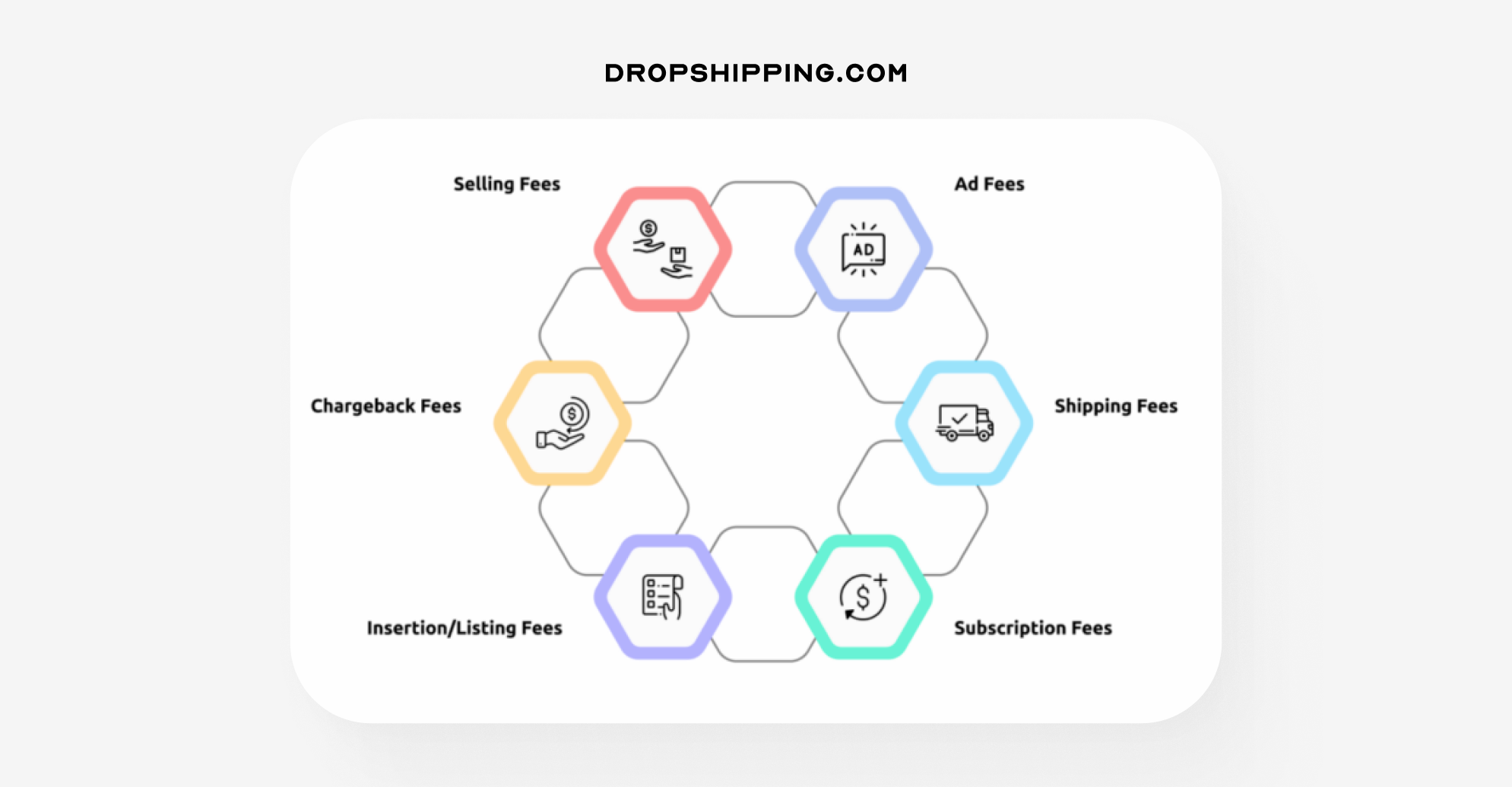
When it comes to selling on Facebook Marketplace, understanding the fee structure is crucial for budgeting your business operations. So, let’s look at the list of fees:
 Subscription Fees
Subscription Fees
Subscription fees are charged for using premium tools offered by Facebook to help sellers manage their online stores more effectively. They’re like a monthly service charge that allows you to benefit from the enhanced features of the marketplace.
However, to sell on Facebook Marketplace, you don’t need to pay for a subscription. Anyone with a Facebook account can join this marketplace without any fees each month or upfront costs to start selling.
It is important to set up a Facebook Marketplace account to access these selling features and enhance your eCommerce experience.
 Selling Fees
Selling Fees
Selling fees are transactional costs that apply once an item has been sold. They are typically a percentage of the total selling price, excluding taxes and shipping charges.
The key difference between these two types of fees lies in their applicability:
- Subscription fees are fixed costs paid upfront regardless of sales performance.
- Selling fees are variable costs dependent on actual sales transactions.
These costs form part of doing business on Facebook Marketplace, so sellers need to factor them into their pricing strategies to ensure profitability.
 Insertion Fees
Insertion Fees
On Facebook Marketplace, you won’t encounter any extra charges for listing items. What’s more, you’re not limited in how many items you can put up for sale.
However, this rule applies to three categories: Items for Sale, Vehicles for Sale, and Homes for Rent or Sale.
In fact, with unlimited free listings, why hesitate to showcase your products? A well-crafted marketplace listing with clear titles, detailed descriptions, and relevant keywords can significantly boost your visibility and sales.
 Shipping Fees
Shipping Fees
Facebook Marketplace fees don’t cover shipping costs. However, you’ll need to pay for a prepaid shipping label.
The shipping charges depend on your listing setup, including weight, destination, and dimensions. Plus, they’re influenced by your agreement with carriers and their shipping policies.
 Meta Ads Fees
Meta Ads Fees
Meta ad costs are what you spend to advertise products or services on Facebook, Instagram, and Messenger.
These ads work on an auction-based system, with costs determined by factors like bid amount, target audience, and ad format.
So, depending on your goals and budget, you can set daily or lifetime budgets for your ads. However, the minimum budget is $1 per day for daily budgets.
How To Use Meta Ads Library To Spy And Beat Your Competitors
 Processing Fees
Processing Fees
If you’re using Shops in Commerce Manager or other third-party e-commerce platforms, Facebook deducts a processing fee from your sales automatically. This fee is a percentage of the total transaction amount, including taxes and fees.

For example, on a $10.00 transaction, a 2.9% processing fee would be $0.29, leaving you with a payout of $9.71.
How Selling Fees are Determined on Facebook Marketplace?
Selling on Facebook Marketplace may seem easy, but it’s important to price your products correctly to ensure you make a profit.
To do that, you need to understand the fees involved. Also, when determining the price of your products, consider these factors:
- Cost of Goods: This includes the cost of acquiring or making the product, such as the purchase price and any preparation expenses.
- Competitive Pricing: Check what other sellers are charging for similar items. You want to be competitive without sacrificing your profits.
- Market Demand: The demand for your product can affect its price. If it’s in high demand, you may be able to set a higher price.
- Value Proposition: What makes your product unique? If it has special features or qualities that set it apart, you may be able to justify a higher price. Using relevant keywords in your listings can enhance visibility and attract potential buyers.
How To Calculate The Facebook Marketplace Selling Fees? [ My Step-by-Step Guide to Calculating]
Here’s how you can determine the fees you’ll need to pay when selling on Facebook Marketplace:
Step 1 – Identify the Base Price
Start with the amount you paid for the item. This is the minimum price you’re willing to accept.
Let’s say you purchased a custom-designed phone case for $5 each from a supplier. Hence, this $5 is your base price, representing the minimum amount you must recoup from the sale to avoid a loss.
Step 2 – Add Operational Costs
Factor in any expenses related to packaging, storing, and shipping items.
For example, if you are dropshipping a custom-designed phone case, let’s say you spend $1 on packaging materials, $0.50 on storage, and $3 on shipping. These operational costs total $4.50, which you need to add to the base price of $5, making the new total $9.50.
Step 3 – Include Marketplace Fees
Facebook charges a fee for each sale, which is usually around 5% of the total amount, or a flat fee for lower-priced items.
So, if you sell the phone case on Facebook Marketplace for $15, Facebook charges a 5% fee, which is $0.75. You need to add this fee to your pricing considerations, bringing the total to $10.25 ($9.50 + $0.75).
Step 4- Consider Additional Expenses
Think about other costs you may incur, such as returns or marketing efforts, and include them in your pricing.
If you decide to allocate $1 per item sold for potential returns and an additional $2 for marketing expenses. These extra costs bring your total to $13.25 ($10.25 + $1 + $2).
Step 5 – Calculate Your Desired Profit Margin
Decide how much profit you want to make from the sale and adjust your price accordingly.
If you aim for a 50% profit margin on each phone case sold, you can multiply your total cost of $13.25 by 1.5, resulting in a final sale price of approximately $19.88. Thus, you should list the phone case for around $20 to ensure your desired profit margin.
By taking these factors into account, you can come up with a price that covers all your expenses and ensures you still make money even after paying the fees.
How To Set A Profitable Price For Selling On Facebook Marketplace? [Calculation Example]
Let’s go through an example to illustrate how to set a profitable price for selling on Facebook Marketplace, considering the costs involved:
- Cost of Goods: Let’s say you purchased a wall art product for $20. This is your base cost.
- Competitive Pricing: After researching similar items on Facebook Marketplace, you find that similar crafts are priced around $35.
- Market Demand: There’s moderate demand for handmade crafts, so you decide to stick with the competitive price of $35.
- Value Proposition: Your craft item has unique embellishments and intricate detailing, making it stand out from others in the market. Targeting local buyers can lead to quicker sales and reduced shipping costs.
Now, let’s calculate the selling fees and determine the profitable price:
- Base Price: $20 (cost of goods)
- Operational Costs: Let’s estimate packaging and shipping costs to be $5.
- Marketplace Fees: Facebook charges 5% of the total amount for each sale. For example, if you sell an item for $35, the fee would be $1.75 (5% of $35).
- Additional Expenses: You don’t anticipate any returns, but you plan to spend $5 on marketing efforts for the listing.
Adding up the costs:
Total Costs: $20 (base price) + $5 (operational costs) + $1.75 (marketplace fees) + $5 (additional expenses) = $31.75
Now, let’s calculate the desired profit margin. You want to make a profit of at least $10 from the sale.
Desired Profit Margin: $10
To calculate the profitable price:
Profitable Price: Total Costs + Desired Profit Margin = $31.75 + $10 = $41.75
So, to ensure a profitable sale and cover all expenses while making a $10 profit, you should list your handmade item on Facebook Marketplace for $41.75
Also, when calculating selling fees on Facebook Marketplace:
- Apply the current fee rate (either 5% or the minimum fee) to the total amount you’re charging, which includes the item price and any shipping costs.
- Don’t forget about sales tax. While it’s not a platform fee, it does impact the final price buyers will pay, and you’ll need to collect it if applicable.
For example, On Facebook Marketplace, when you sell stuff, they already take out taxes and payment fees. They automatically cut either 5% of your sale or $0.40 if it’s less than $8.
So, if you sell something for $12, they’ll take out $0.60. If you sell something for $5, they’ll probably just take the flat fee of $0.40, leaving you with $4.60.
Remember, being transparent about your pricing is important. Buyers appreciate knowing what they’re paying for.
Armed with this knowledge about costs and fees, sellers can confidently set their prices and run their businesses profitably.
How To Sell On Facebook Marketplace in 2024? [ My Step-by-Step Guide]
If you want to sell on Facebook Marketplace, here’s a detailed guide to help you get started:
Step 1: Create A Facebook Account
First, you must create a Facebook account or use your existing one.
Go to Facebook.com and follow the steps to enter your basic information and set up your account. If you’re new to Facebook, you must provide details like your name, email address, and a secure password.
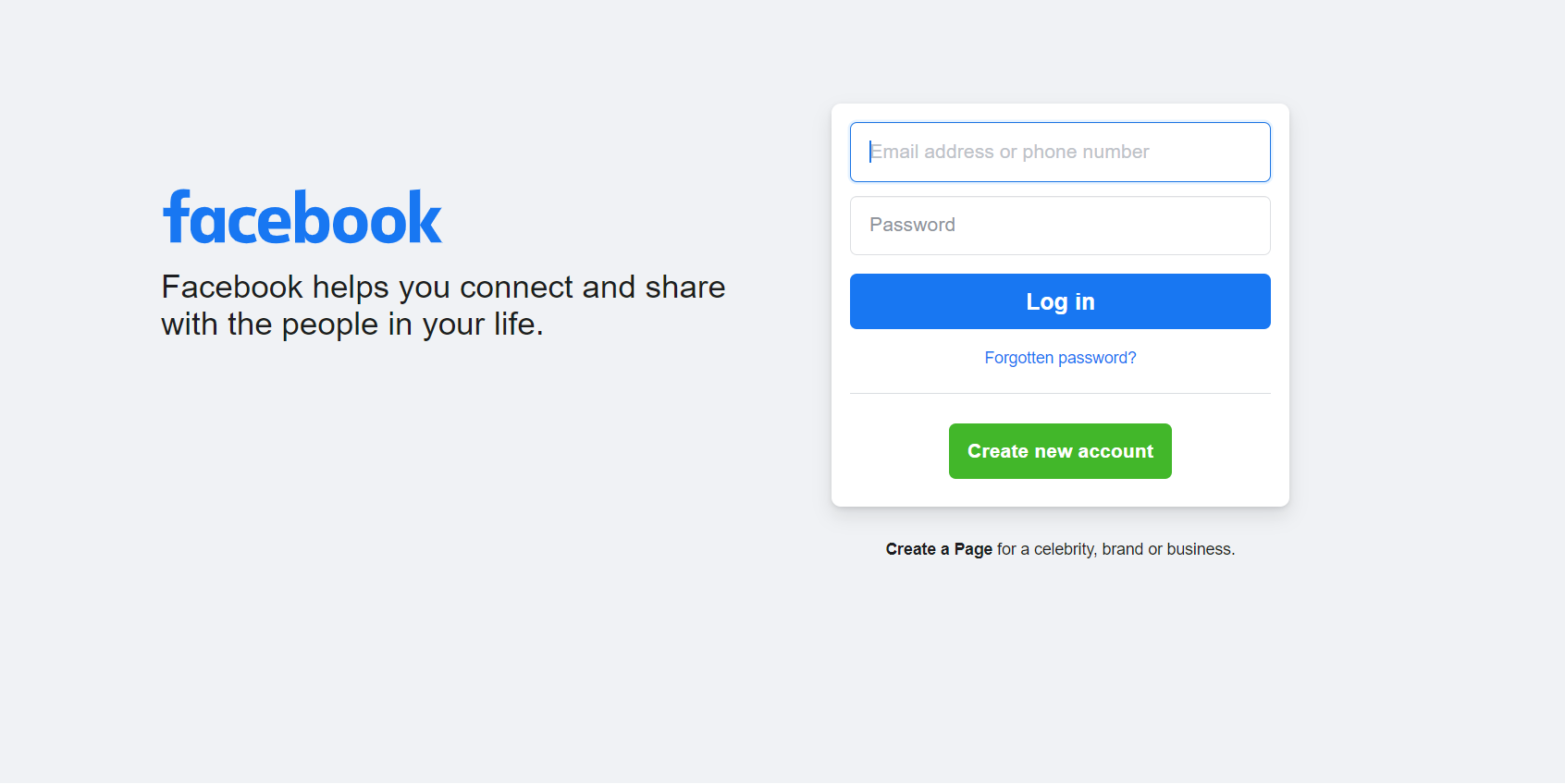
You can also add a profile picture and cover photo to make your account look more authentic.
Note: You must be over 18 years old, and in some countries, your account must be active for 5 months before you can start selling.
Step 2: Find Products To Sell
Next, find the products you want to dropship. I suggest you use a product research tool like Minea to find trending products on social media.
Minea helps you discover successful products and offers advanced search filters to refine your search by date, media format, gender, geographical location, and language.
This ensures you find the most relevant products for your target market.
So, select “Facebook” as the social media channel to see the best-selling products. Spend time researching and comparing different products to identify those with high demand and low competition.
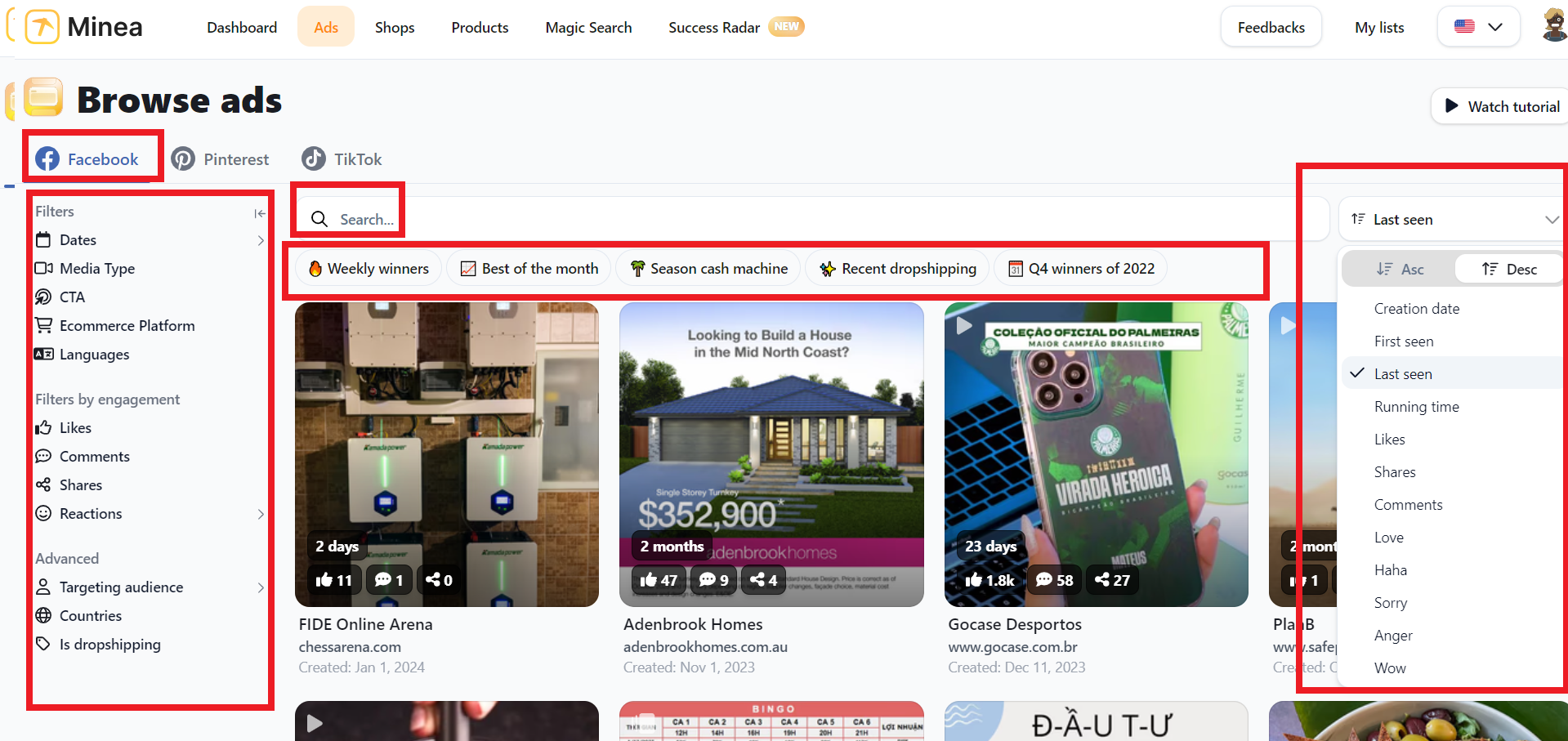
Step 3: Read Facebook’s ECommerce Policy & Merchant Agreement
Review Facebook’s e-commerce policy and merchant agreement to understand which products you can and cannot sell.
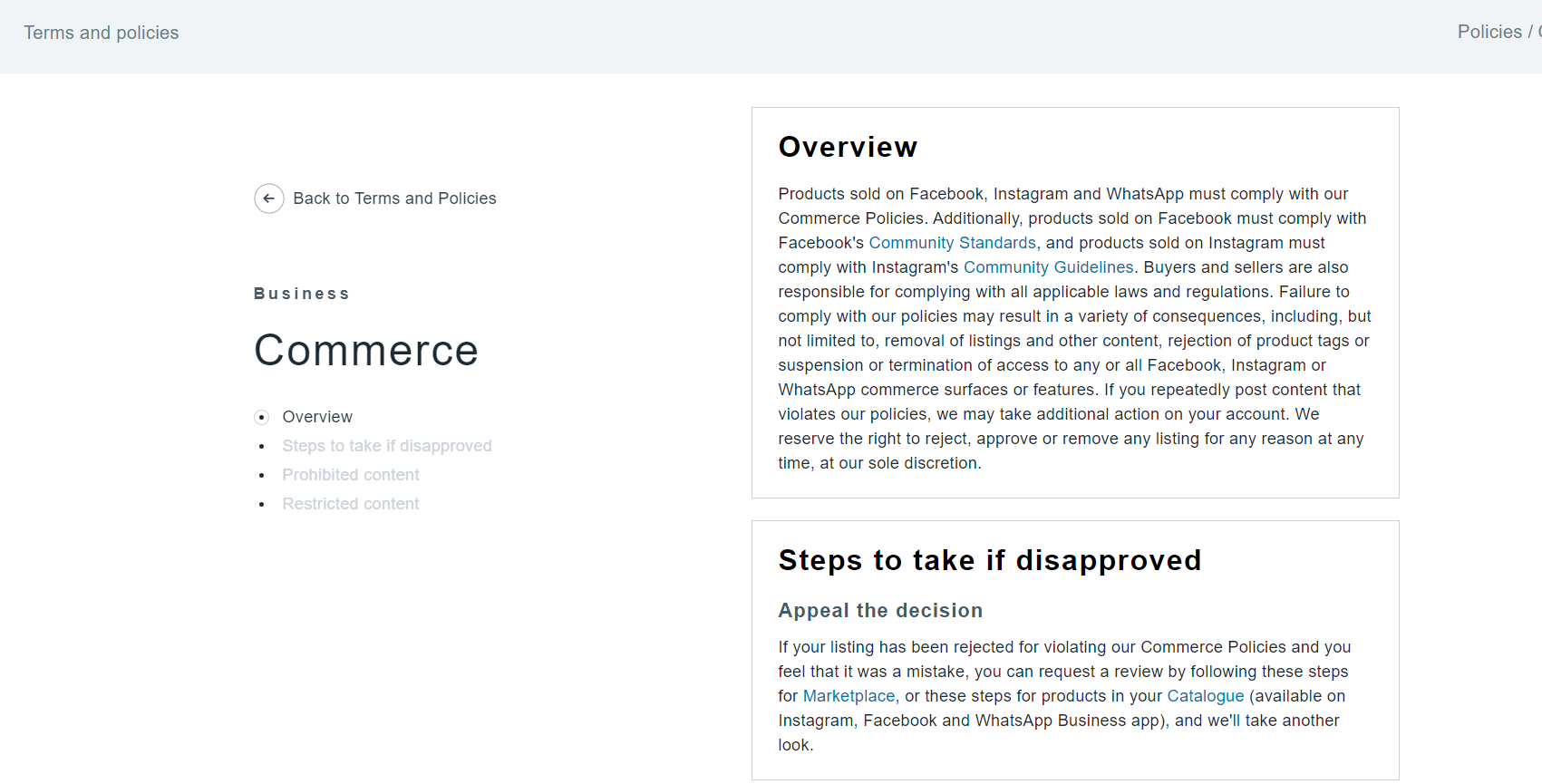
Hence, Facebook prohibits 25 product categories, including adult products, alcohol, recalled items, weapons, and gambling products. Familiarize yourself with these restrictions to avoid any issues.
So, I suggest you check these guidelines carefully and ensure your products comply with Facebook’s standards to prevent your listings from being removed.
Step 4: Find Your Dropshipping Suppliers
After deciding on your dropshipping niche, use the Dropshipping.com supplier directory to find reliable suppliers.
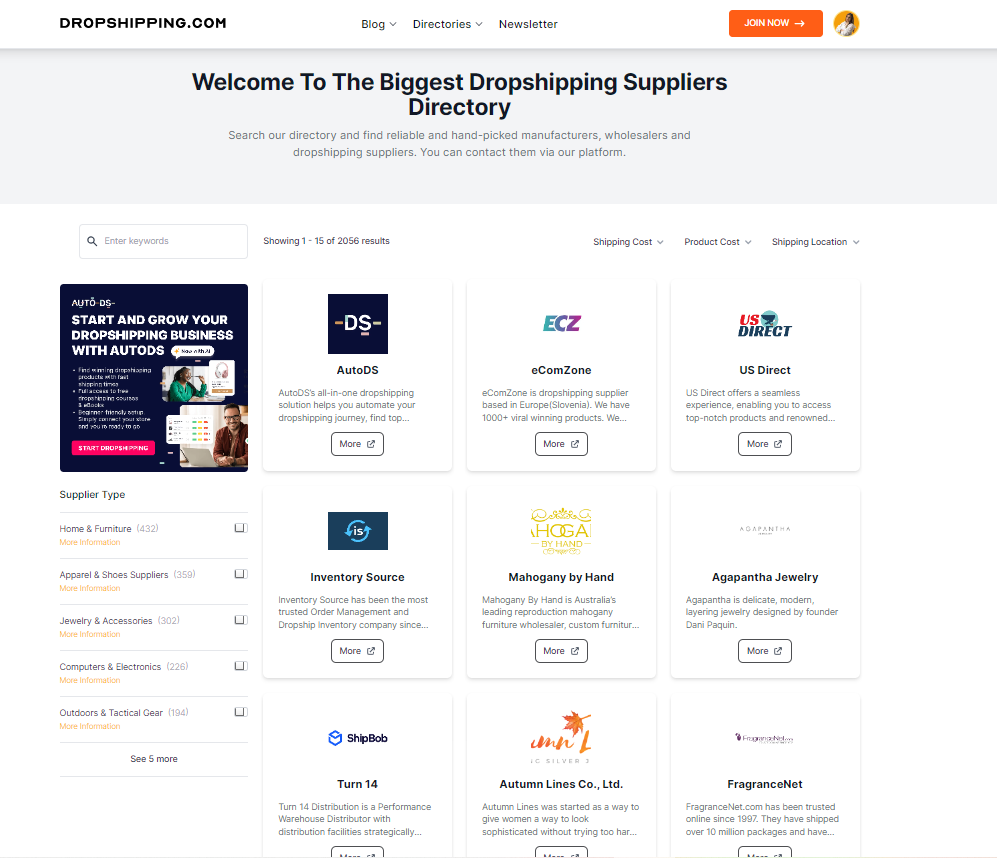
There are over 2000 suppliers to choose from in every niche, including clothing, electronics, shoes, and home decor. So, here you can investigate each supplier’s reputation, delivery times, and customer service.
Also, this platform gives you valuable insights about the supplier, like MOQ requirements, product costs, average order processing time, and more.
Plus, you can contact suppliers directly to establish relationships and negotiate the best terms for your business.
Step 5: Go To Facebook Marketplace
Once you’ve chosen your products and suppliers, go to Facebook Marketplace from your Facebook Dashboard. Click on “Marketplace” from the left sidebar to enter the selling platform.
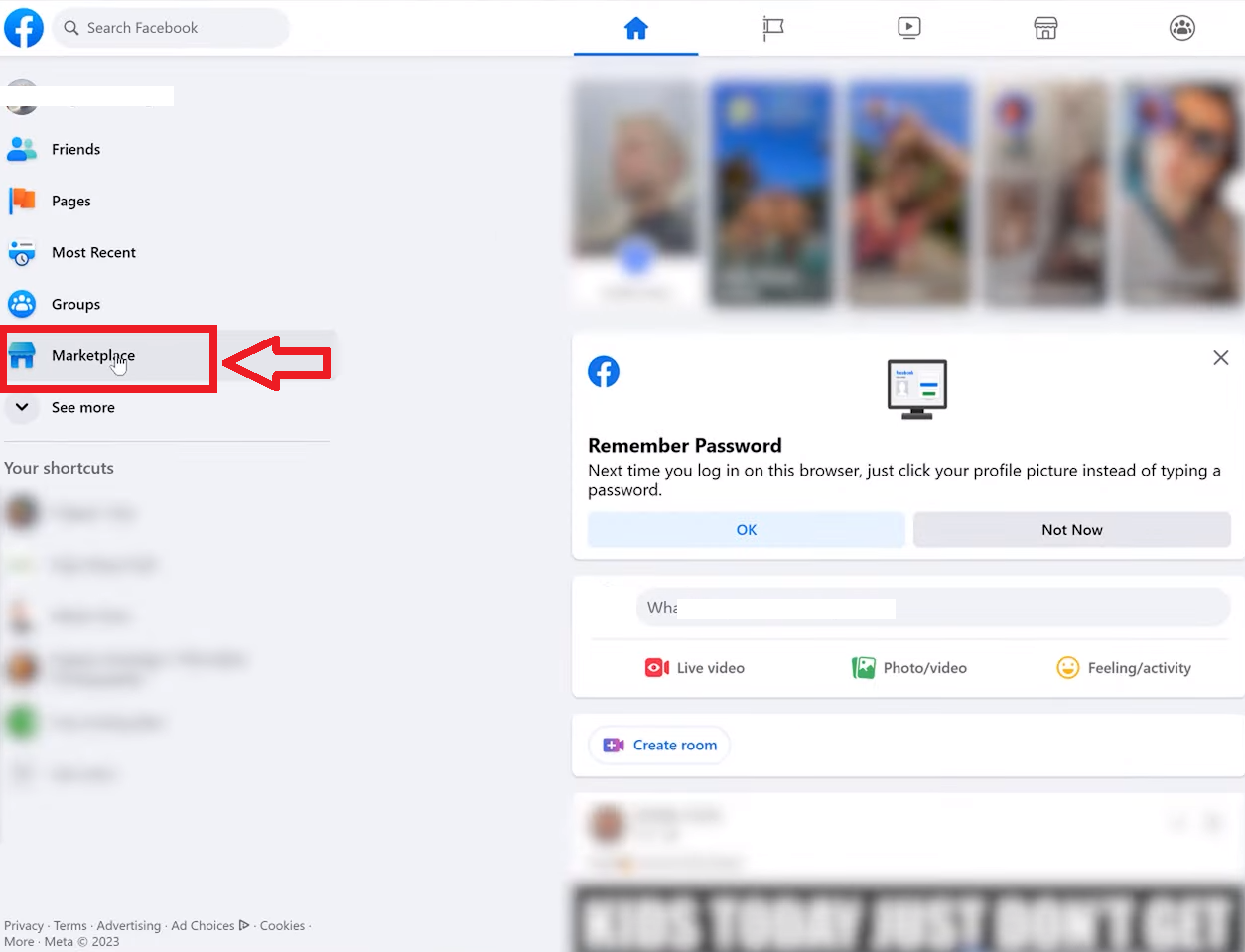
The products listed on Facebook Marketplace are usually based on your location, but you can use filters to change the location and reach a broader audience.
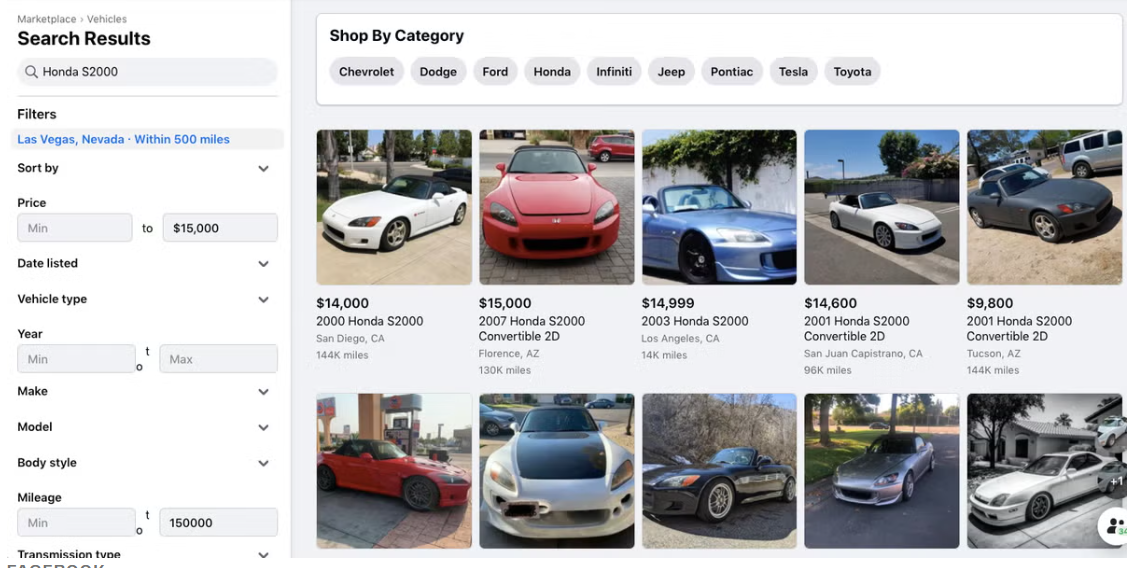
Explore different categories to understand how other sellers list similar products and what pricing strategies they use.
Step 6: Create New Marketplace Listings
In the “Selling“ section, click on “Create New Listing” to easily set up your account and sell items on Facebook Marketplace. Choose the listing type that best suits your product.
Add high-quality photos taken from multiple angles to showcase your product effectively.
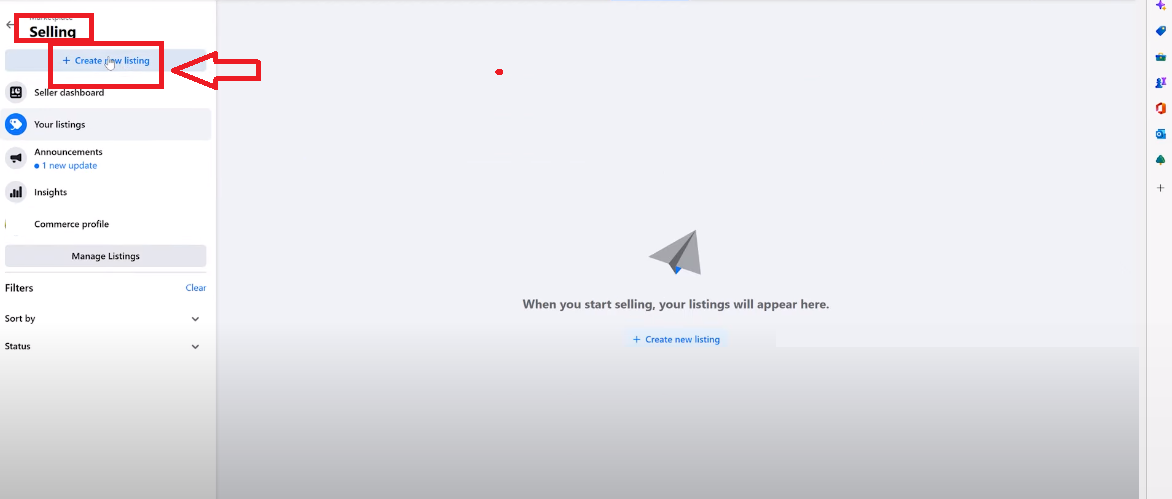
Moreover, write a detailed description that includes all relevant details, such as size, color, material, and unique features.
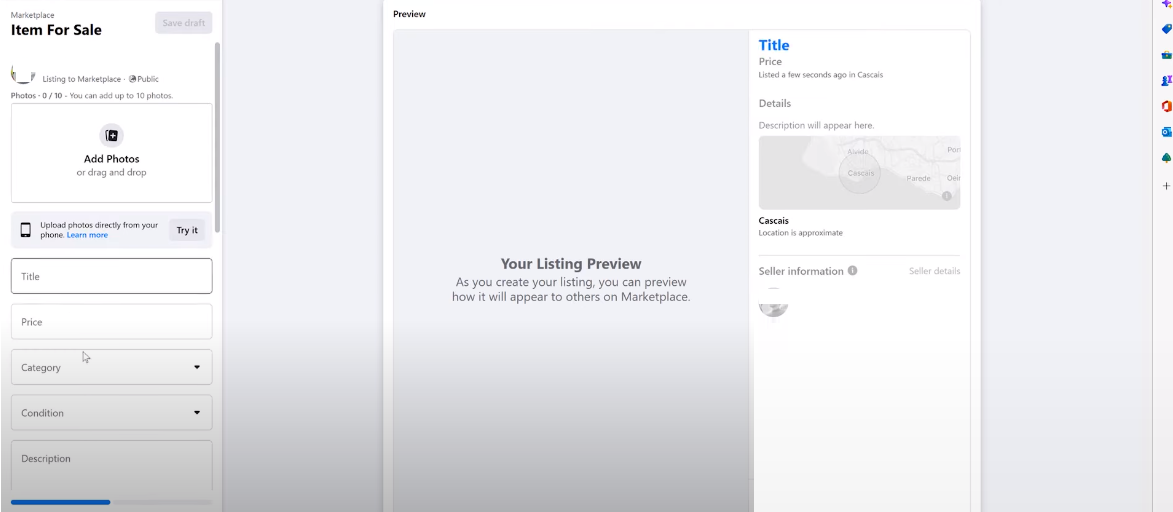
Use product tags to make your listing more searchable. Based on your research, set a competitive price that covers all your costs, including shipping and fees.
If you have a dropshipping supplier, find the products on their website and add them to Facebook Marketplace.
Also, I suggest you use tools like the Dropshipping Titans Marketplace extension to simplify listing products and transfer images, titles, and descriptions.
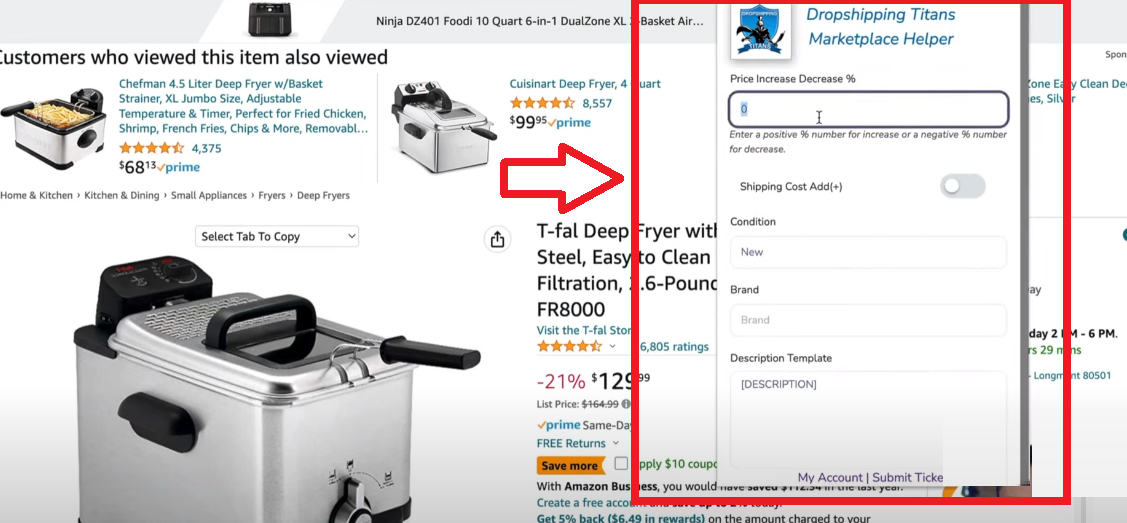
Step 7: Publish Your Marketplace Listings
Once your listing is ready, select Facebook Marketplace and click “Publish.” Review your listing to ensure all details are accurate and appealing.
Also, engage with potential buyers by promptly responding to inquiries via Facebook Messenger.
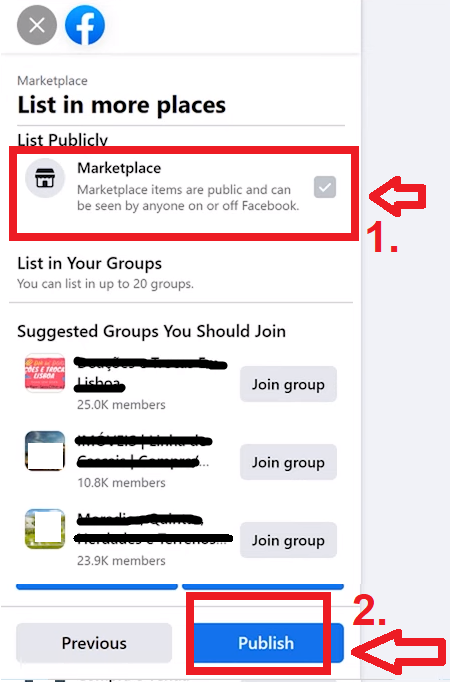
Providing excellent customer service can increase your chances of selling items and ensuring successful transactions, which can lead to positive reviews.
Step 8: Promote Your Dropshipping Products
How to sell on Facebook Marketplace correctly involves promotion as well.
So, create Facebook ads to promote your products. Facebook ads are affordable and can help you reach your target audience quickly with various targeting options, such as demographics, interests, and behaviors.
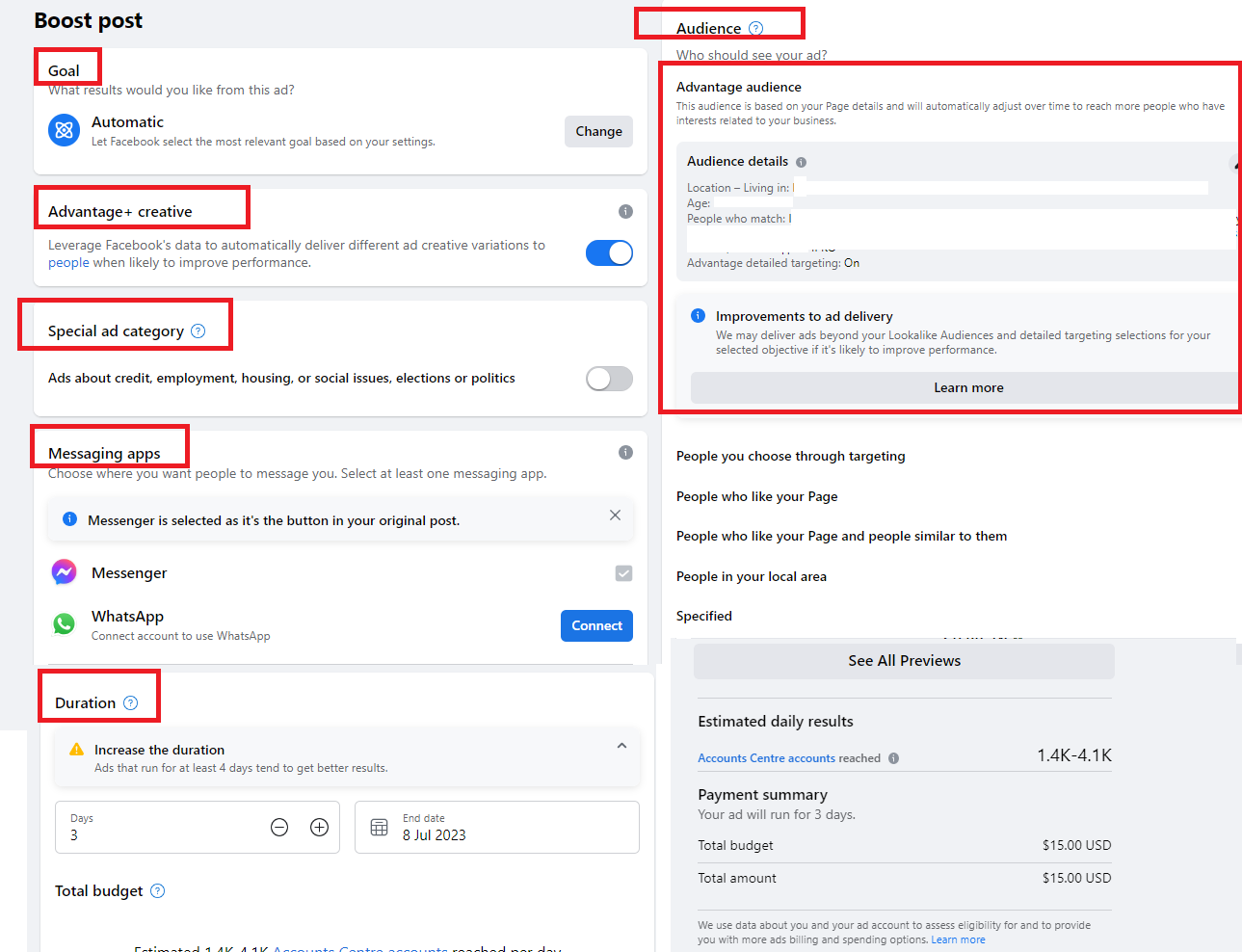
Also, I suggest you use Meta Ads Library and explore ads for inspiration. This way, you can spy on your competitors, see what strategies they use, and explore your target audience and engagement in such products.
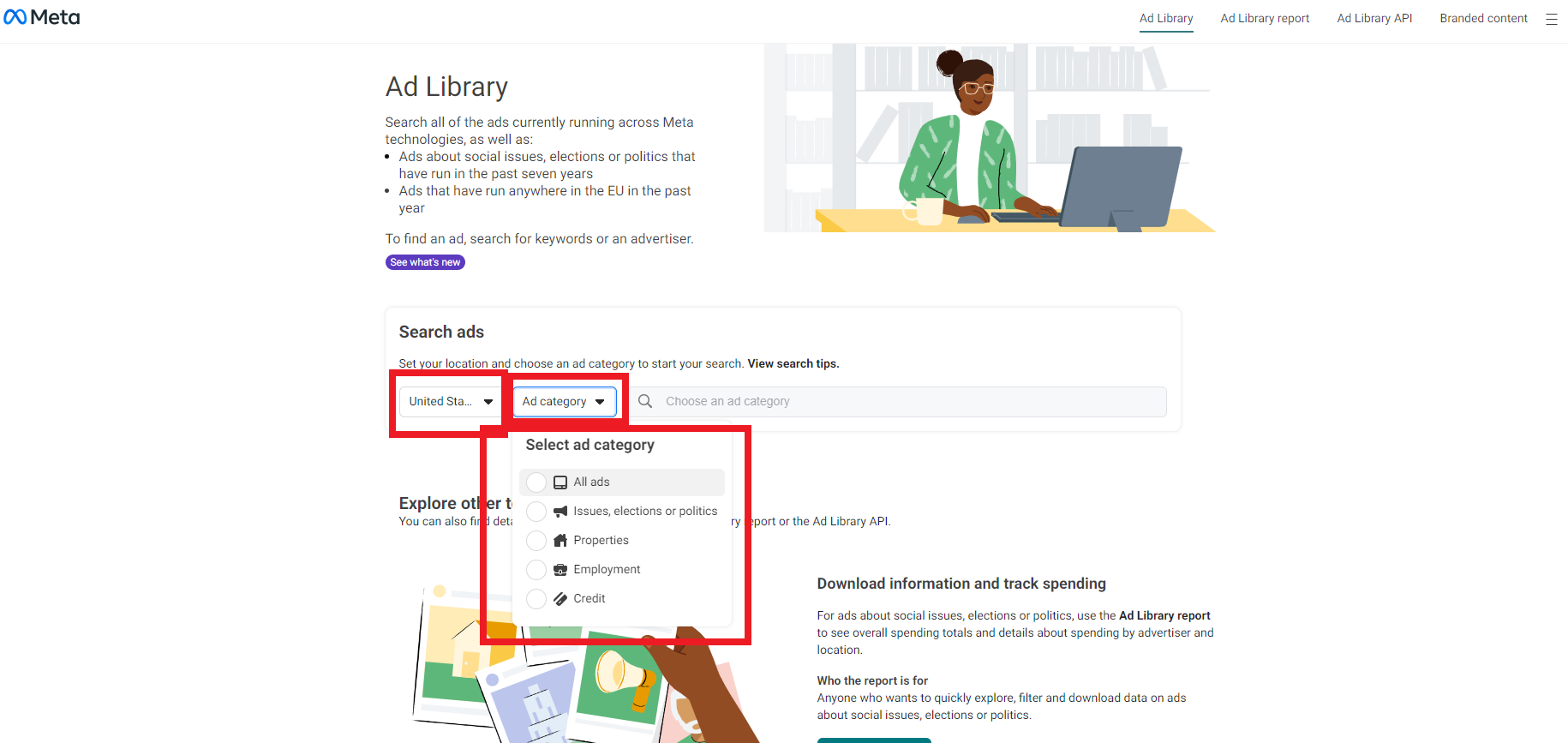
Hence, you can start by setting up your location and ad category and typing in the keyword for the ads you want to see.
Craft compelling ad copy and use eye-catching images to grab attention. Monitor the performance of your ads and adjust your strategies based on the results to maximize your return on investment.
Why Should You Care About Facebook Marketplace Fees?
Here’s the good stuff: What if I told you there’s a way to make selling on Facebook Marketplace not just profitable but also simpler? Yes, I am talking about dropshipping!
An increasingly popular business model, dropshipping can unlock new opportunities for sellers on Facebook Marketplace.

How Can Dropshipping Help You Navigate Facebook Marketplace Fees?
Dropshipping is a retail fulfillment method where sellers don’t need to keep products in stock.
Instead, when a seller receives an order from a customer, they simply contact the supplier, who will ship the products directly to the customer’s door.
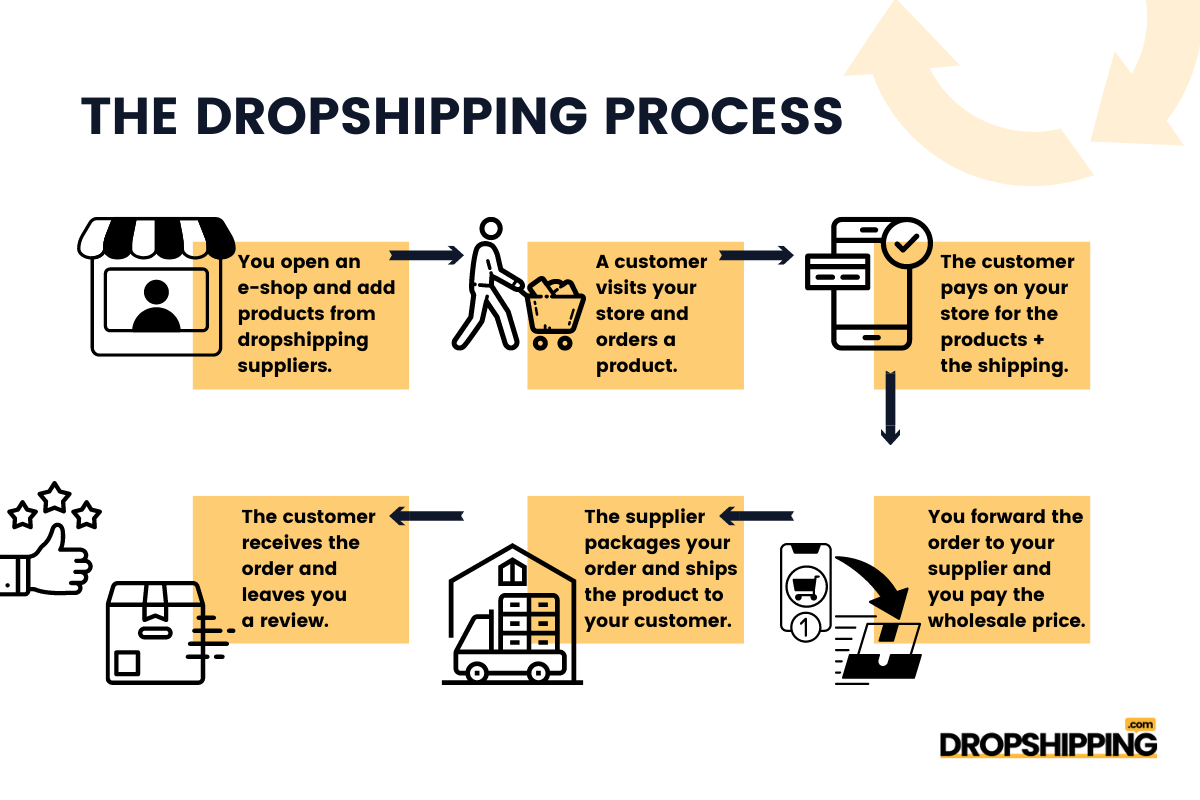
In simple terms, dropshipping allows you to sell products without worrying about inventory or shipping.
So, how does dropshipping tie into Facebook Marketplace fees?
Well, since you don’t have to invest in inventory upfront or handle shipping logistics yourself, it significantly reduces your overhead costs. This means you have more flexibility when pricing your products and can factor in Facebook Marketplace fees while still maintaining healthy profit margins.
Sounds good so far?
Let’s look closer at how Facebook Marketplace fees work and how dropshipping can be your game-changer.
How Does Dropshipping Help in the Context of Facebook Marketplace Fees?
As a seller on Facebook Marketplace, understanding your selling options is key.
One such option, dropshipping, serves as a popular fulfillment method that offers potential advantages in managing selling fees.
Dropshipping allows sellers to operate without maintaining an inventory. Instead, products are purchased from a third party and shipped directly to the customer.
This process reduces overhead costs, making it easier for sellers to manage their selling fees on Facebook Marketplace.
So, there are numerous automation tools that can help you manage to sell on Facebook Marketplace.
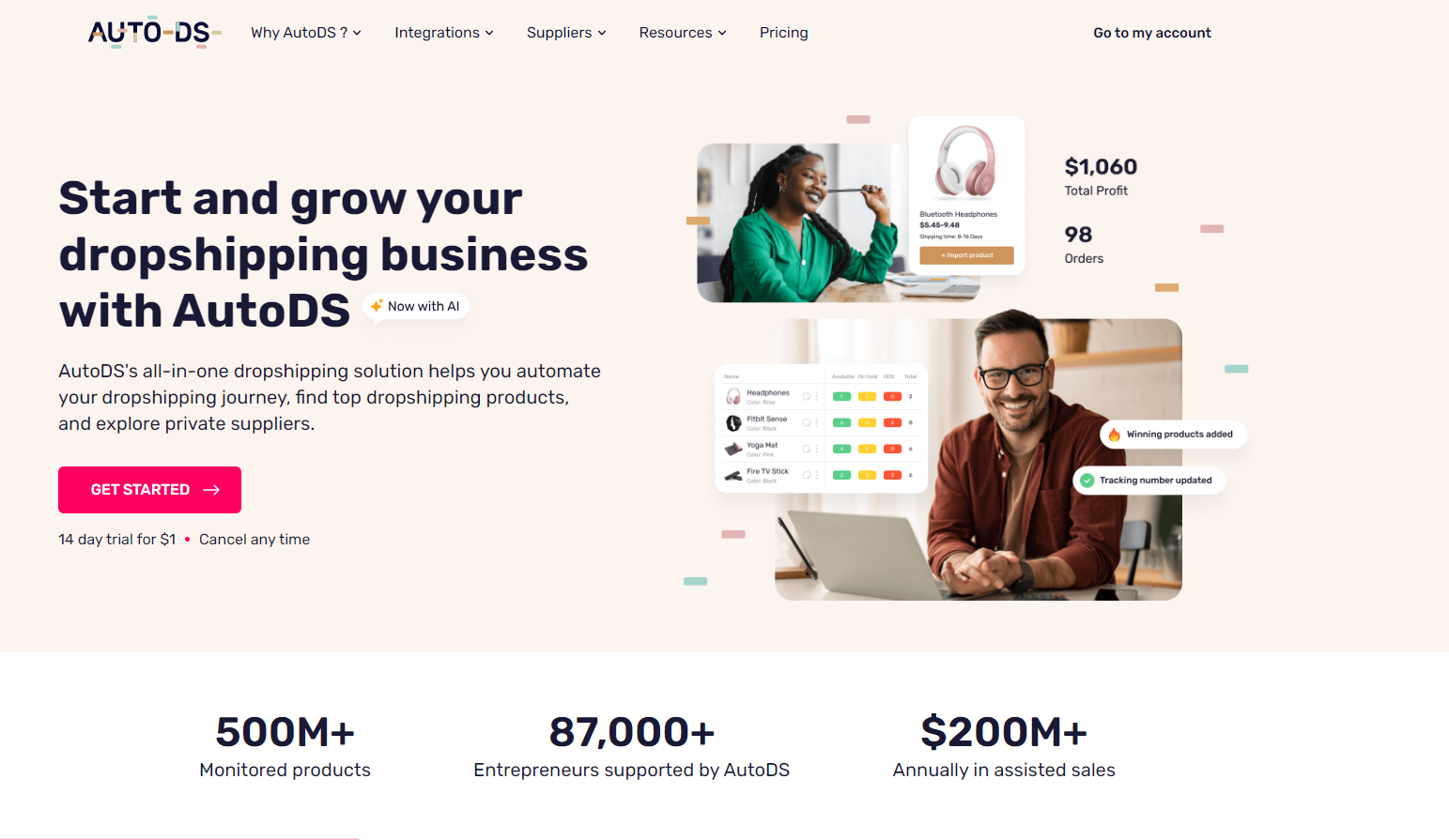
AutoDS emerges as an efficient dropshipping tool that simplifies this process. AutoDS supports automated dropshipping operations, helping sellers:
- Manage orders
- Track inventory levels
- Update product listings automatically
Plus, their subscription fees for Facebook Marketplace start from $19.90/month.
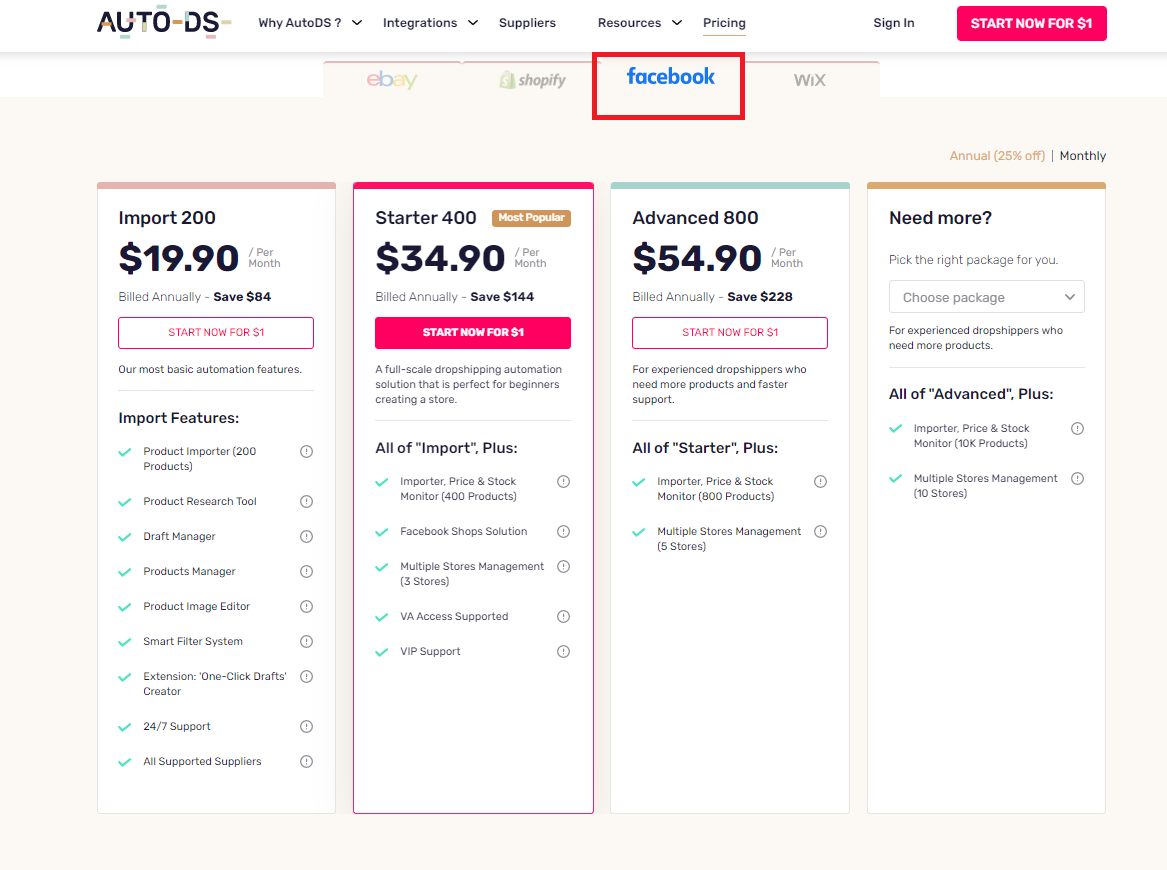
By automating these processes, sellers can focus more on optimizing their marketing strategies and less on operational tasks.
 Pricing Automation with AutoDS
Pricing Automation with AutoDS
AutoDS also offers pricing automation features that adjust product prices based on your desired profit margins
This feature takes into account the selling fees on Facebook Marketplace, ensuring your pricing remains competitive while still retaining profitability.

Costs to Consider In Dropshipping To Sell On Facebook Marketplace
While dropshipping presents an attractive business model, it’s essential to keep an eye on related costs:
- Product Research Expenses: A successful dropshipping business relies heavily on product selection. Various tools and services aid in this process, but they often come at a cost. These expenses contribute to the overall cost of running a dropshipping business.
- Order Fulfillment Costs: Even though you’re not handling inventory management with dropshipping, fulfilling orders has associated costs. These can include transaction fees from payment gateways and shipping costs borne by you or passed onto customers.
For example, I use the product research tool to find my winning products, and its costs start at $49/month.
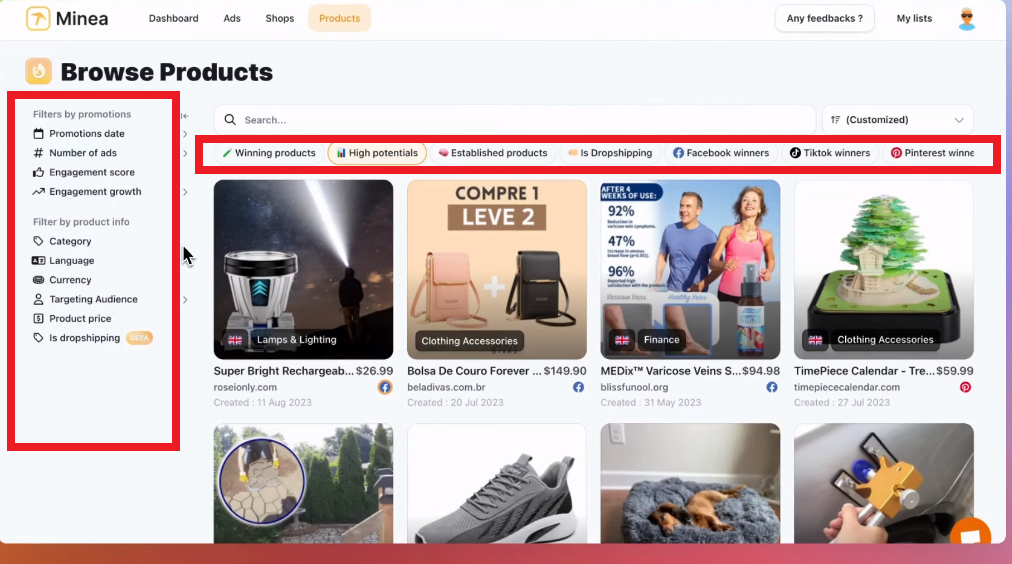
On the other hand, AutoDS is a perfect tool for order fulfillment costs starting at $19.90/month for Shopify users.
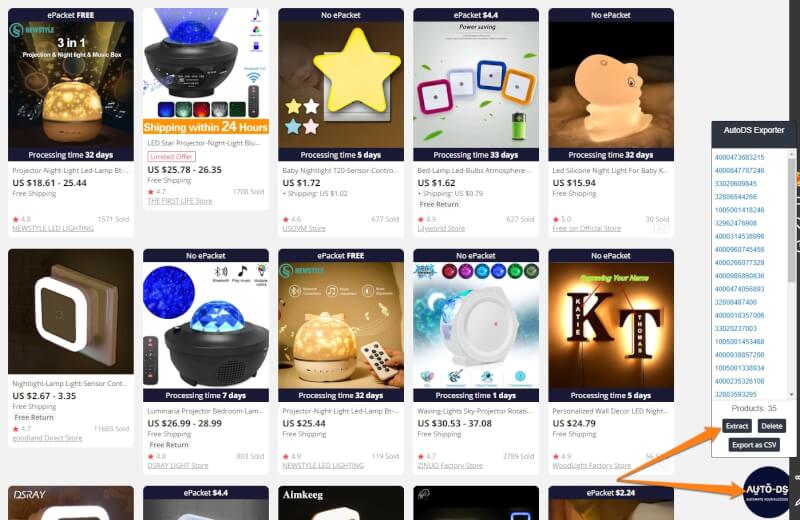
By recognizing these costs upfront and factoring them into your overall pricing strategy, you can maintain a healthy profit margin while competitively pricing your products on Facebook Marketplace.
How To Evaluate Your Dropshipping Business on Facebook Marketplace? [What Are the Costs and Benefits]
Gone are the days when success in eCommerce was solely about having the lowest prices.
Today’s savvy entrepreneurs understand that both financial implications and strategic advantages need to be taken into account for any business model, including dropshipping on Facebook Marketplace.
It’s not just about crunching numbers; it’s about creating value – value for your customers, your brand, and your bottom line.
 Effective Price Optimization Strategies
Effective Price Optimization Strategies
Now let’s talk about something crucial – price optimization. How you price your products can greatly impact your profit margins, especially when fees come into play.
Here are two strategies you might find useful when it comes to Facebook Marketplace fees:
- Value-Based Pricing: This strategy focuses on the perceived value of your product rather than just its cost. If your customers believe they’re getting their money’s worth, they’ll be willing to pay a premium.
- Competitive Pricing: Monitor your competitors’ pricing strategies. If they lower their prices, you might need to follow suit to stay competitive. But remember, never engage in a price war that could harm your profits.
 Advertising Tools on Facebook Marketplace
Advertising Tools on Facebook Marketplace
Let’s shift gears and discuss how to reach a larger audience on Facebook Marketplace. The platform offers various advertising tools that can help enhance the visibility of your listings.

Sponsored posts, for instance, can put your products in front of more potential buyers.
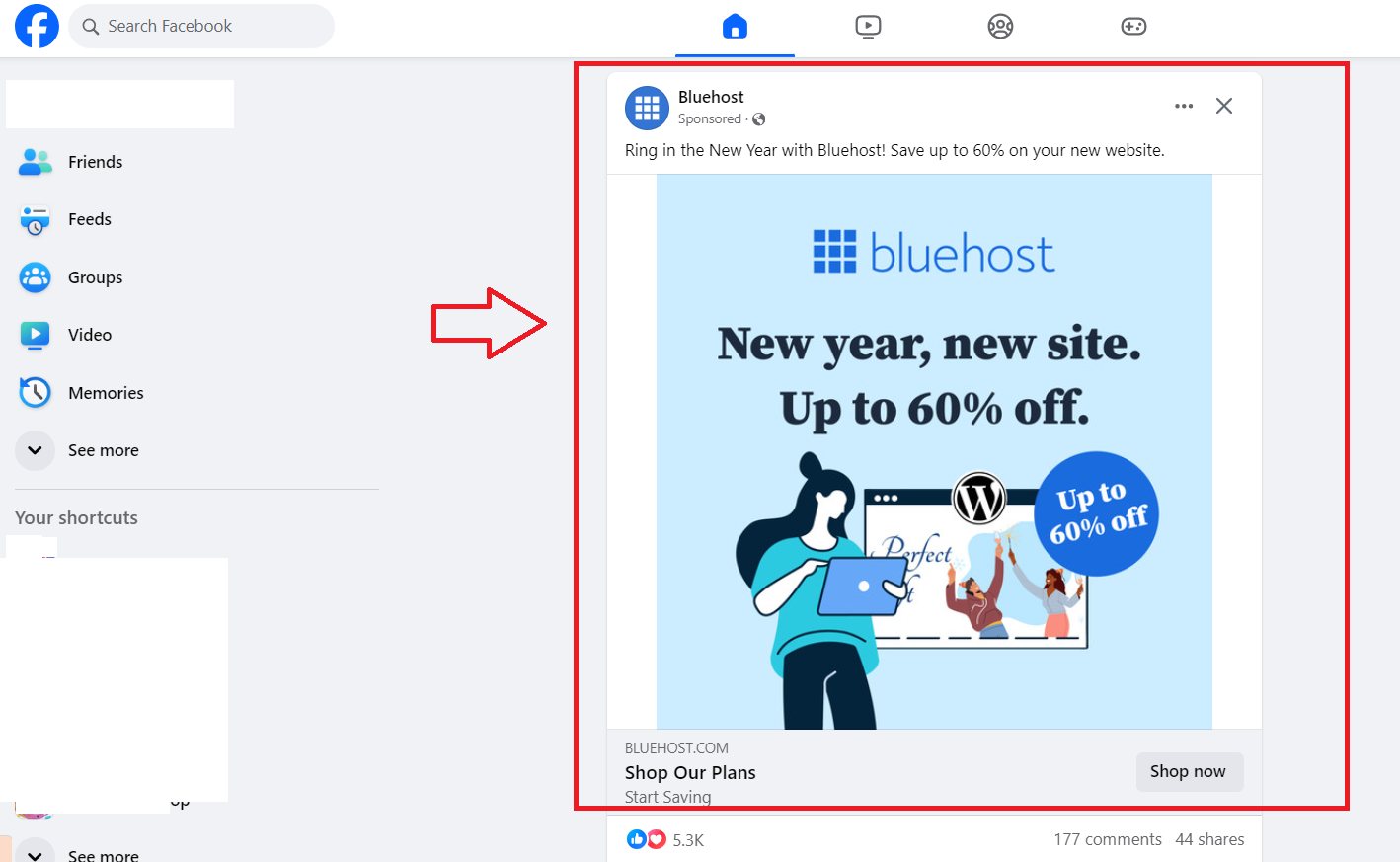
But here’s the good stuff:
You can target Meta users for better ad performance. Since Meta users are already familiar with Facebook services, targeting them could lead to higher engagement rates and, ultimately, more sales.
One of the best ways to improve your ad strategy is to monitor your competitors using the Meta Ads Library.
To get started, visit the Ad Library, set your location, choose the ad category, and type in the business name. Their ads will be linked to their Facebook page and share the same name.
From there, you can view all the ads they’ve run over the past seven years. Each ad is displayed as a card, which you can click on for more details.
You can also use filters to find specific ads and get more information about your competitors’ strategies.
These filters allow you to see their entire creative approach, including text, images, and videos. You can also look at what ads they ran in previous years, especially during holidays or promotional periods.
For instance, if you want to see how a clothing brand promotes its holiday sales, use the filters to find all its holiday ads from previous years.
If you’re selling on Facebook Marketplace and dropshipping sunglasses, search for “Warby Parker” to view their ads for eyewear and other products.
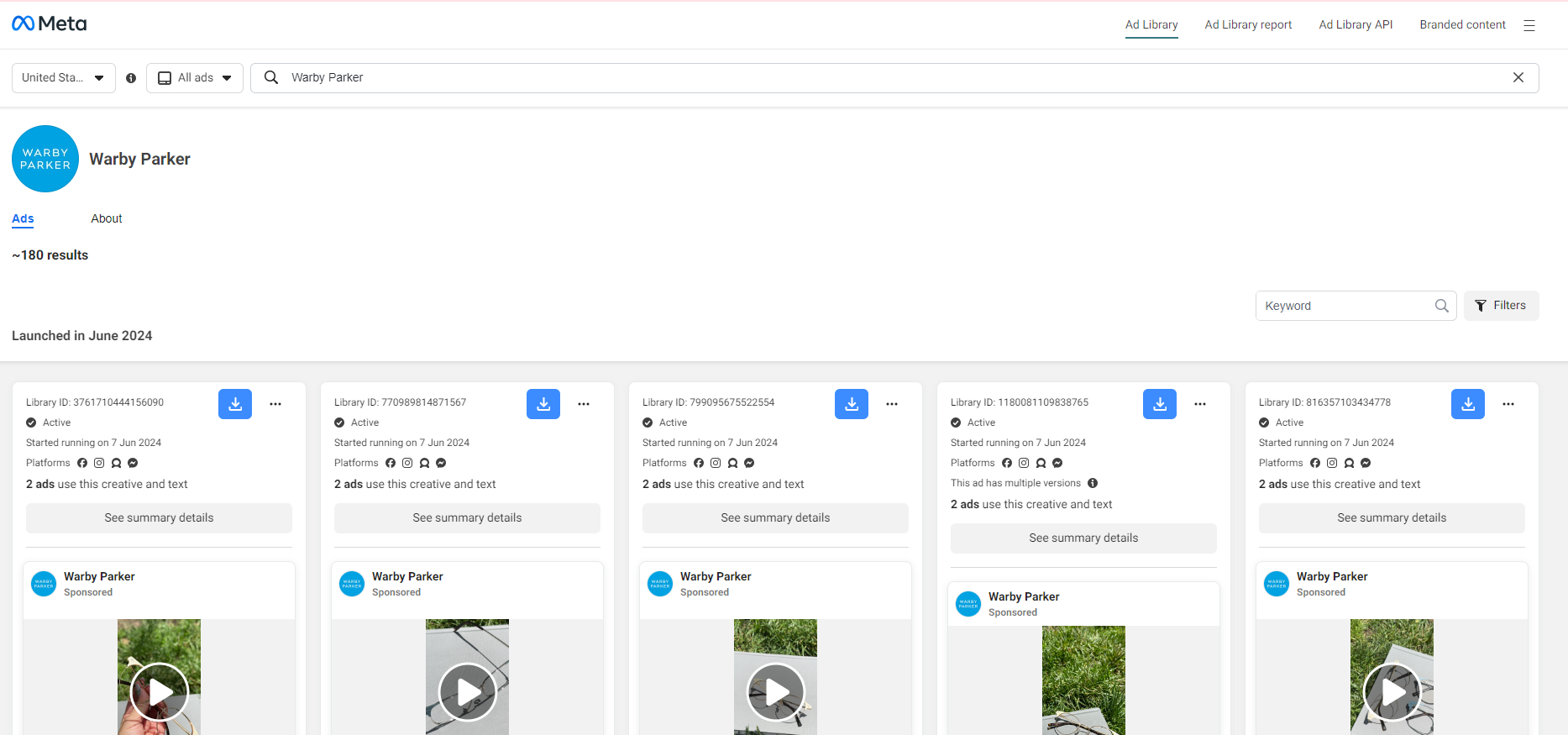
This will help you understand their marketing tactics and identify trends that you can incorporate into your own Facebook marketplace listings.
 Use Competitor Ad Spy Tools
Use Competitor Ad Spy Tools
Additionally, setting up a system to save screenshots of competitor ads can be very helpful.
Note the elements that make these ads effective, such as compelling images, catchy headlines, and persuasive calls to action.
Tools like AdEspresso or Social Ad Scout are excellent for tracking and analyzing your competitors’ social media ad campaigns.

Another helpful tool is Dropispy, which monitors Facebook ads and gathers them into a comprehensive database, allowing you to access the information in real-time.
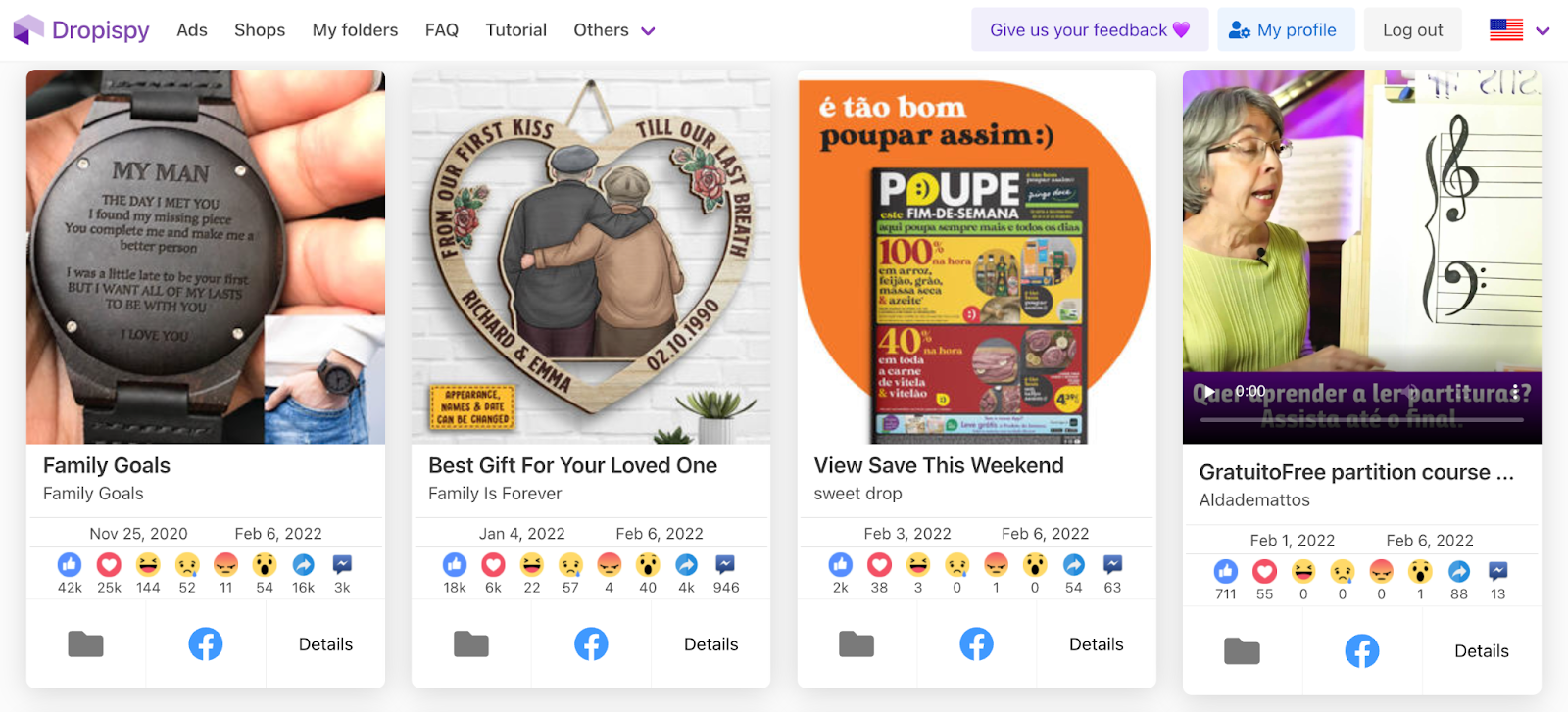
Using these tools and strategies, you can gain a deeper understanding of your competitors’ ad tactics, which will help you improve your own Facebook Shop and attract more potential buyers.
Other Financial Considerations on Facebook Marketplace
When diving into the world of online selling, it’s not just about what you earn but also what you spend.
Wise sellers know that managing your outgoings is as crucial as boosting your income.
So, let’s talk about some key financial factors that could affect your bottom line when selling on Facebook Marketplace.
Meta Pay: Secure Payments with a Click
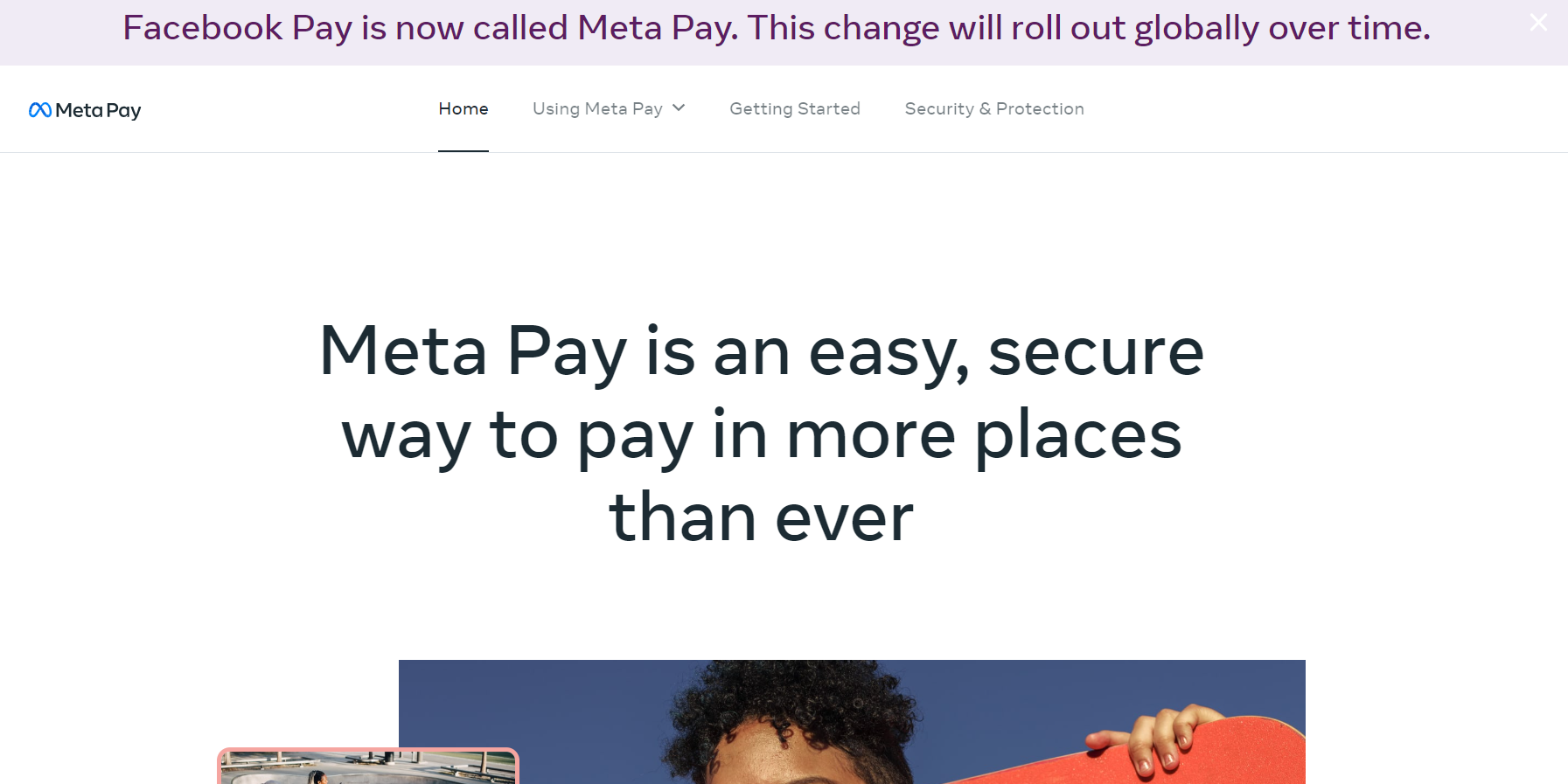
Meta Pay, formerly known as Facebook Pay, simplifies transactions for both buyers and sellers.
Benefits of Meta Pay
- Ease of Use: Quick setup and the convenience of saving payment information for future purchases.
- Security: Advanced technology to protect payment information and monitor for unauthorized activity.
However, look for any transaction fees associated with Meta Pay. These fees are small percentages of the sale price and can increase over time.
Chargebacks: Prevention Better Than Cure
Chargebacks can be a seller’s nightmare, potentially causing significant financial setbacks.
Therefore, here are some proactive steps to safeguard your finances:
- Clear Descriptions: Ensure product listings are accurate and detailed to avoid misunderstandings.
- Prompt Customer Service: Respond quickly to inquiries and complaints to resolve issues before they escalate.
- Documentation: Keep records of transactions and communications in case you need evidence to dispute a chargeback.
By staying vigilant, you can minimize chargebacks and their impact on your revenue.
Dropshipping Returns: How To Set Up Your Returns & Refunds? [Full Guide].
Shipping Costs: Balancing Speed with Expense
Shipping is a balancing act between cost efficiency and customer satisfaction. Here’s what to consider:
- Carrier Options: Compare rates across different carriers for the best deal.
- Packaging: Use appropriate packaging to prevent damage without incurring unnecessary costs.
- Bulk Shipping Discounts: Explore bulk shipping options if you’re moving large volumes of products.
Remember, transparent communication about shipping times and costs goes a long way in managing customer expectations.
Tax Regulations: Keeping It Legal
Taxes are as certain as sunrise, so it’s essential to understand tax obligations when selling online:
- Stay Informed: Keep up-to-date with the latest tax regulations in your region or areas you ship to.
- Record Keeping: Maintain accurate records of all sales for easy reporting during tax season.
Consulting with a tax professional can ensure compliance and prevent any unwelcome surprises from tax authorities.
By addressing these financial considerations head-on, sellers can maintain healthy margins and continue thriving on Facebook Marketplace.
Read about Dropshipping Taxes and Payments – Guide For Beginners.
How To Use Facebook Marketplace To Gain Competitive Advantage?
In the bustling world of eCommerce, carving out a competitive edge is crucial for sellers looking to thrive.
On Facebook Marketplace, this means going beyond just understanding fees.
It’s about harnessing the unique features and opportunities that the platform offers to create a standout presence.
1. Personalized Customer Engagement
Use Messenger to build relationships with potential buyers. Hence, personalize your interactions and provide stellar customer service that encourages repeat business.
Take Tidio, for instance. It lets visitors like Instagram and Facebook Messenger receive quick and useful replies.

What’s more, Tidio, along with its artificial intelligence technology, manages conversations on your behalf.
Moreover, I suggest you send confirmation messages to your customers so they feel important. Also, consider using the cross-selling and upselling strategy and offering them products related to the ones they tend to buy.
For example, if they buy gift cards, offer them a gift box as well.
2. Localized Selling
Capitalize on the local selling feature to connect with nearby customers. This can lead to quicker sales, reduced shipping costs, and an opportunity for personal delivery experiences.
3. Facebook Shop Integration
If you have a Facebook Shop, integrate it with Marketplace to expand your reach. Showcase your full catalog of products in a more curated environment.
For example, if you want to sell your handmade products, like art, or jewelry, Amazon or Etsy are a great choice.
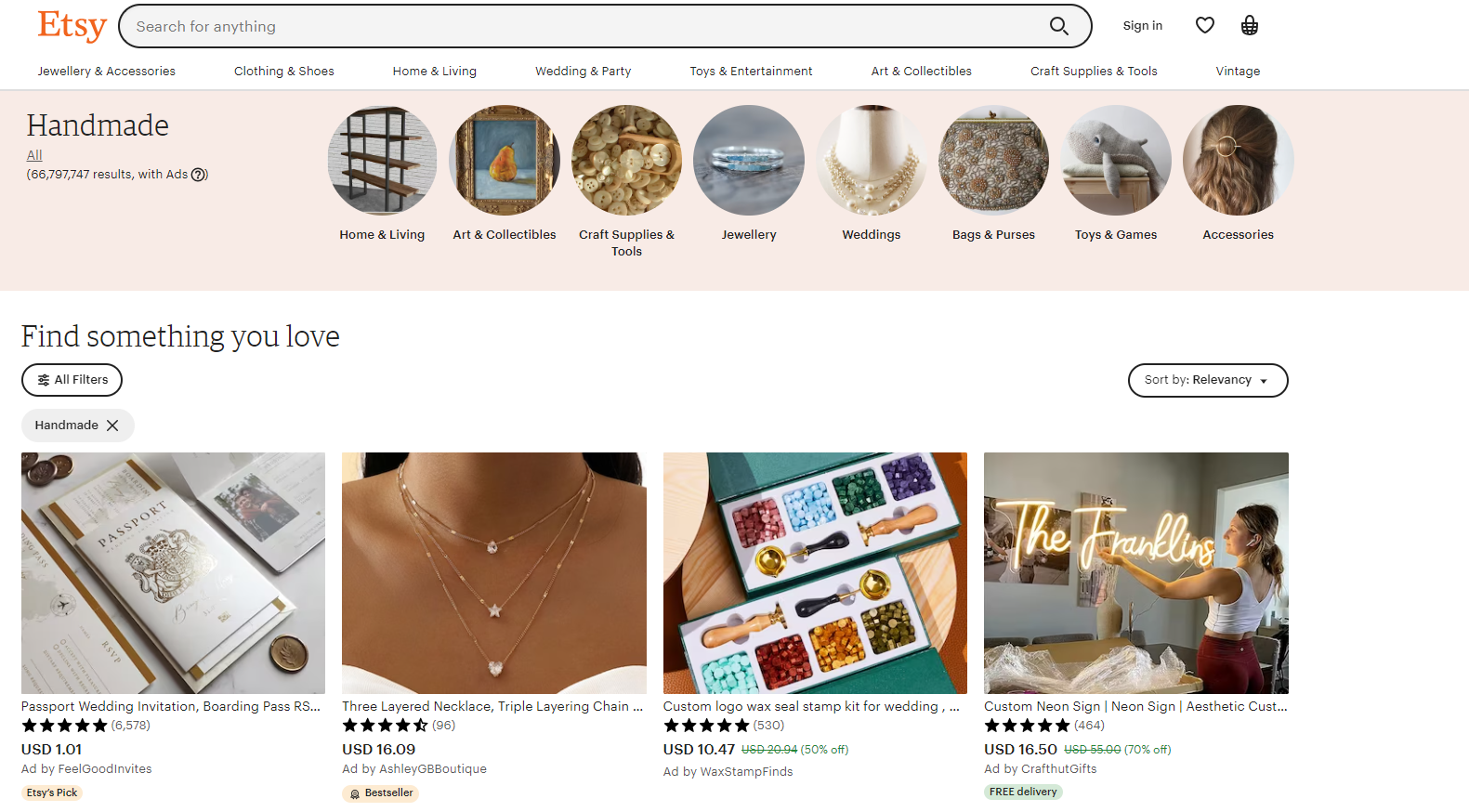
Encourage satisfied customers to leave positive reviews and share their purchases on their profiles. Hence, this word-of-mouth marketing can significantly enhance trust in your brand.
For example, I always find it inspiring how Startup Institute shows its customer’s reviews. Hence, it is in the form of interesting and cute love letters that catch users’ attention.
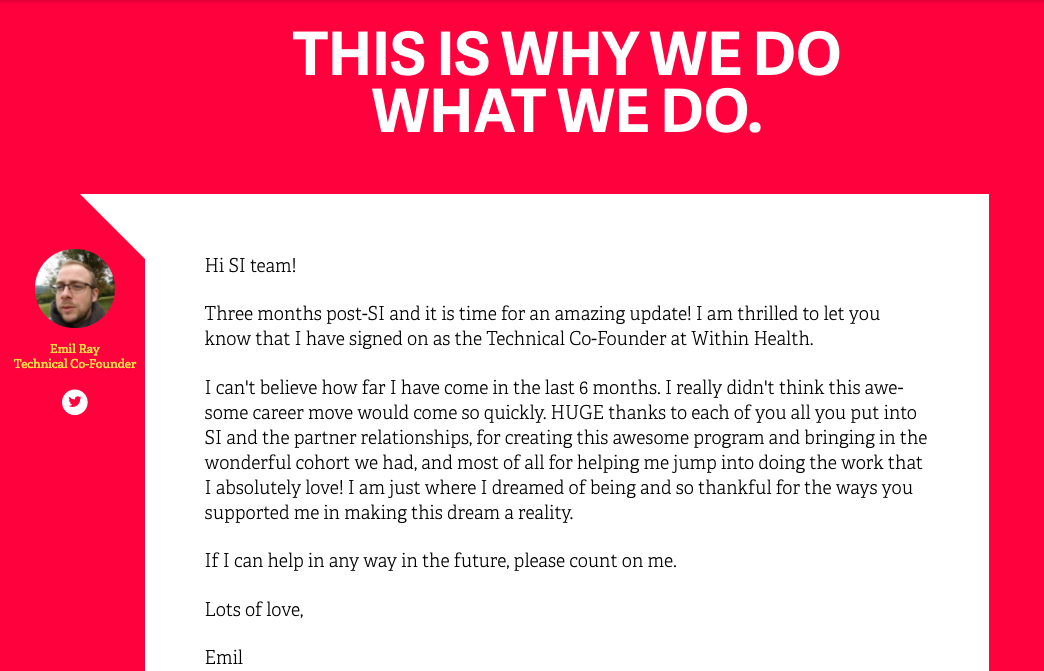
5. Visual Merchandising
Invest time in high-quality images and videos of your products. In fact, a picture is worth a thousand words, and in the online marketplace, it could also be worth a thousand clicks.
Each of these strategies positions you not just as another seller but as a forward-thinking brand that knows how to play to its strengths on Facebook Marketplace.
For instance, Gymshark, a well-known fitness apparel brand, excels at using video marketing on its Facebook page.
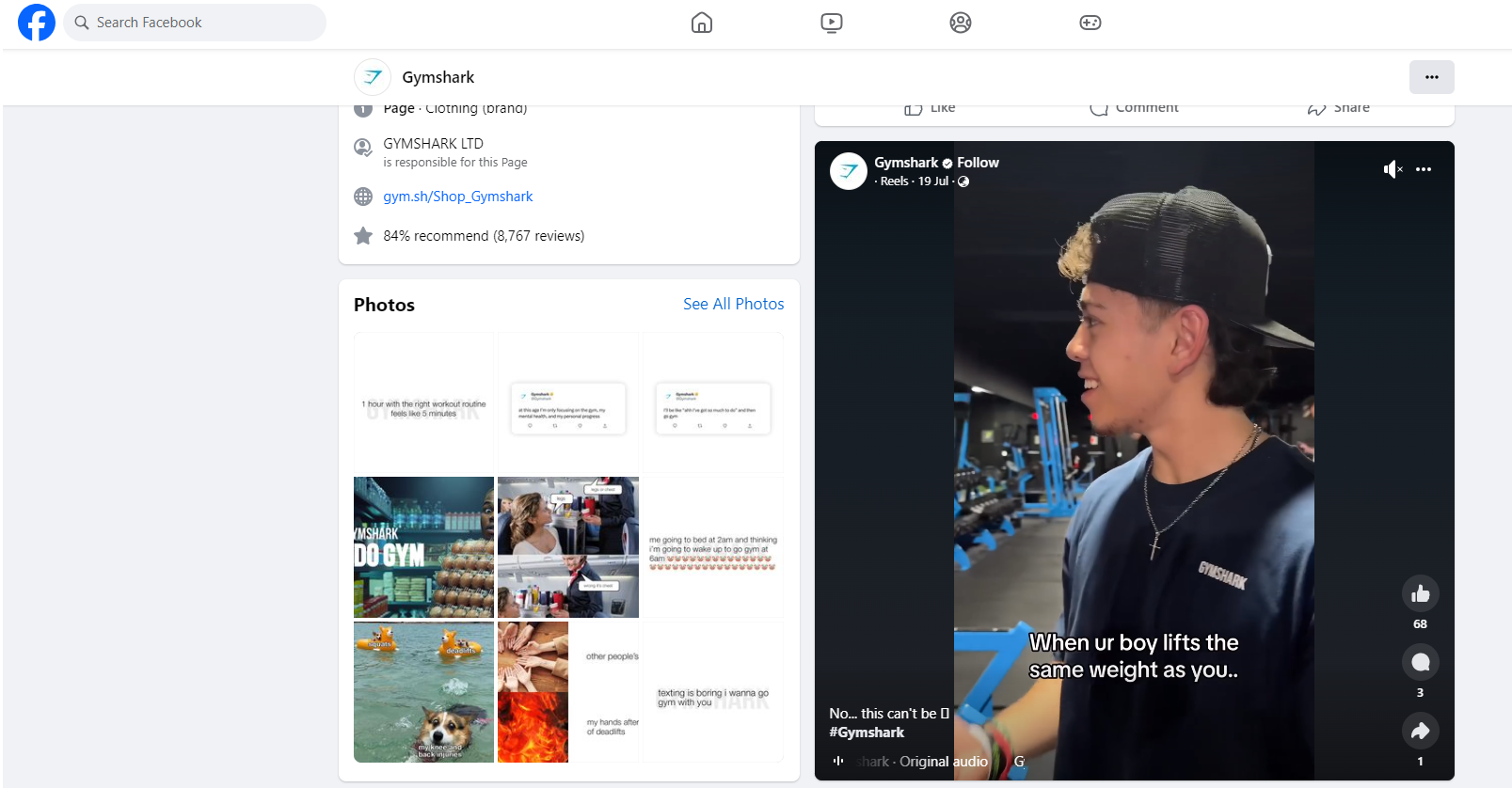
They produce captivating content that features their products in use, including workout routines, product demos, and collaborations with influencers. This approach helps them build a strong connection with their audience and attract more traffic to their store.
So, by focusing on these aspects, you’re not only managing costs effectively but also delivering value that resonates with customers and keeps them coming back for more good stuff.
Remember, standing out isn’t just about what you sell; it’s about how you sell it. Harnessing these distinguishing features elevates your business from the crowd, setting the stage for enhanced visibility and sustained growth.
Other Ways To Sell On Facebook [Facebook Marketplace Alternatives]
Facebook Shops
If you’re a small-business owner wanting to build an audience, grow your brand, and boost sales, Facebook Shops is a great place to start.
With Facebook Shops, you can set up a full online store right on your Facebook business page. Customers can purchase items without leaving Facebook.

To sell on Facebook, you must create a business profile. Here’s how:
- Log in to Facebook.
- Click the Menu button.
- Select Pages from the Create menu.
Next, add your cover photo, profile photo, and information about your business. Detailed information fields make your page look more professional to potential buyers.
Remember, to use Facebook Shops and Marketplace integrations, your products must follow Facebook’s commerce policies and the terms in the Facebook Seller Agreement.
Facebook Buy and Sell Groups
Many people use Facebook buy-and-sell groups for C2C transactions. These groups can enable the buy-and-sell feature, creating a commerce option for local communities around specific topics or locations.
While groups aren’t the main way merchants sell on Facebook, you can still use these groups to build your brands locally.
Conclusion
You now have a deeper understanding of Facebook seller fees and the cost of selling on Facebook Marketplace. Harness these insights to craft selling strategies that reflect both financial savvy and market awareness.
Remember, while navigating the fees is crucial, it’s just as important to tap into the platform’s expansive potential for growth.
Let this knowledge serve as a stepping stone towards maximizing your business’s success on Facebook Marketplace. Stay attuned to new developments, optimize continuously, and watch your business thrive in this dynamic eCommerce space.
















![The Top 21 3PL Companies Compared [2025 List & Guide]](https://images.weserv.nl/?url=https://prod-dropshipping-s3.s3.fr-par.scw.cloud/2024/03/Frame-3922469.jpg&w=420&q=90&output=webp)